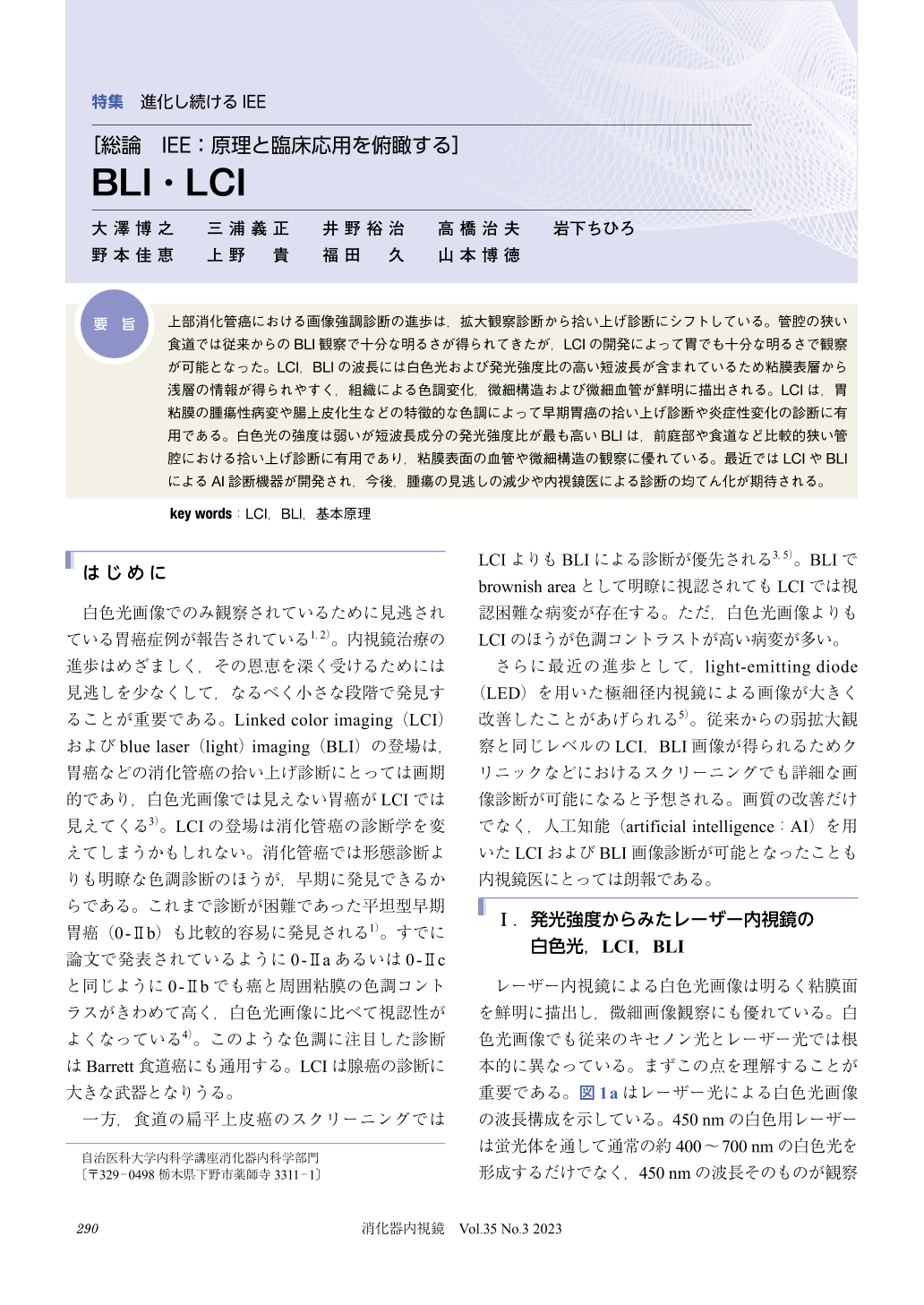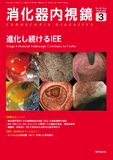Japanese
English
- 有料閲覧
- Abstract 文献概要
- 1ページ目 Look Inside
- 参考文献 Reference
要旨
上部消化管癌における画像強調診断の進歩は,拡大観察診断から拾い上げ診断にシフトしている。管腔の狭い食道では従来からのBLI観察で十分な明るさが得られてきたが,LCIの開発によって胃でも十分な明るさで観察が可能となった。LCI,BLIの波長には白色光および発光強度比の高い短波長が含まれているため粘膜表層から浅層の情報が得られやすく,組織による色調変化,微細構造および微細血管が鮮明に描出される。LCIは,胃粘膜の腫瘍性病変や腸上皮化生などの特徴的な色調によって早期胃癌の拾い上げ診断や炎症性変化の診断に有用である。白色光の強度は弱いが短波長成分の発光強度比が最も高いBLIは,前庭部や食道など比較的狭い管腔における拾い上げ診断に有用であり,粘膜表面の血管や微細構造の観察に優れている。最近ではLCIやBLIによるAI診断機器が開発され,今後,腫瘍の見逃しの減少や内視鏡医による診断の均てん化が期待される。
Advances in image-enhanced endoscopy for upper gastrointestinal cancer have shifted from magnifying observation to screening. BLI provides brightness enough to observe the esophagus with relatively small lumen, while LCI provides sufficient brightness ever for stomach with large lumen. LCI and BLI include both white light and short wavelengths with high rates of emission intensity, providing much information about the surface and superficial layer of mucosa. Thus, these modes can visualize microvessels and microstructure on the mucosal surface as well as mucosal color reflecting histological findings. LCI can produce characteristic mucosal color on the gastric tumor and intestinal metaplasia, which is useful to screen early gastric cancer and diagnose inflammatory gastric mucosa. BLI has a low intensity rate of white light but the highest intensity rate of short wavelengths and is thus excellent to screen malignant lesions in relatively narrow lumens such as gastric antrum and esophagus and to observe microvessels and microstructure on the mucosal surface. Recently, artificial intelligence endoscopy combined with LCI and BLI has been developed and may contribute to the decreased miss rate of cancers and to the uniform ability among endoscopists to detect them.

© tokyo-igakusha.co.jp. All right reserved.


